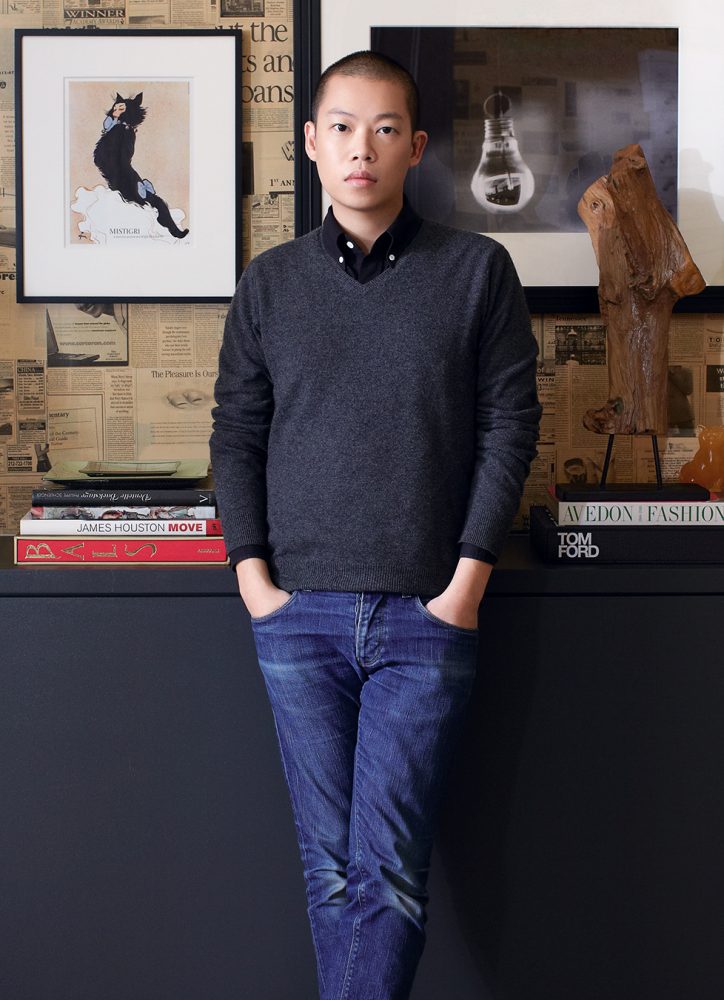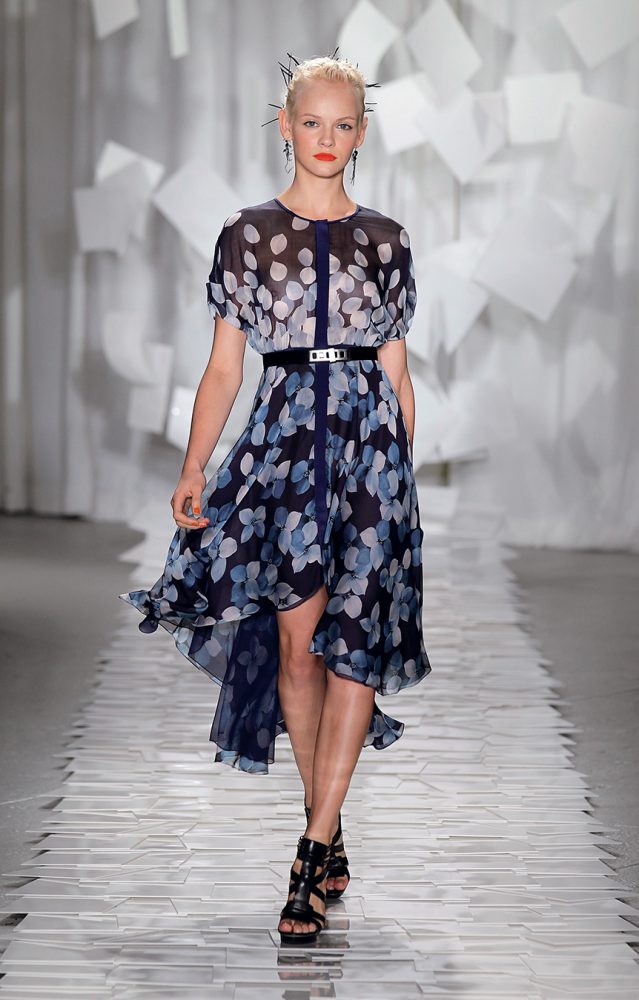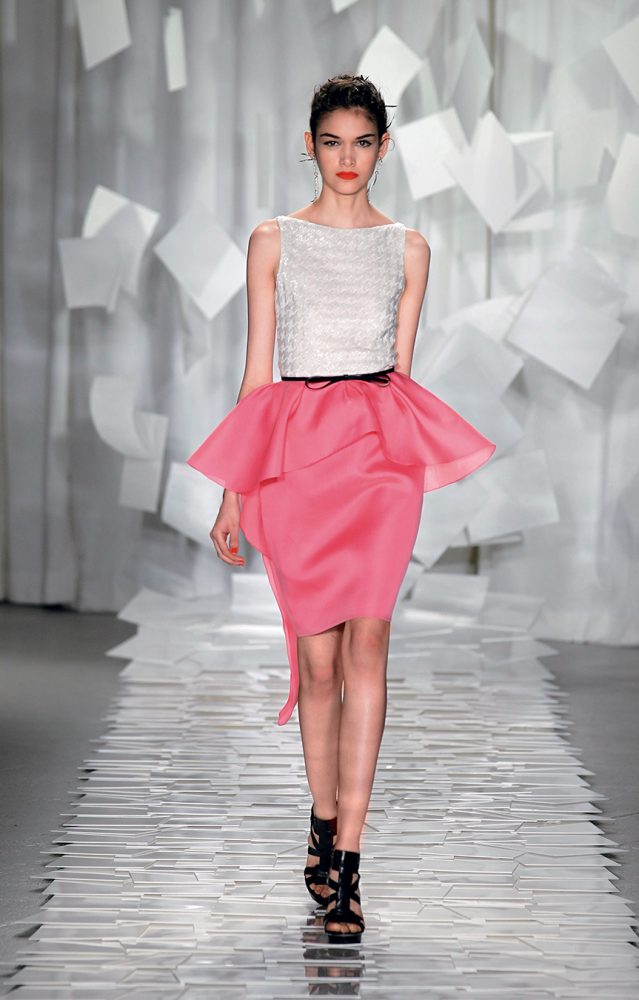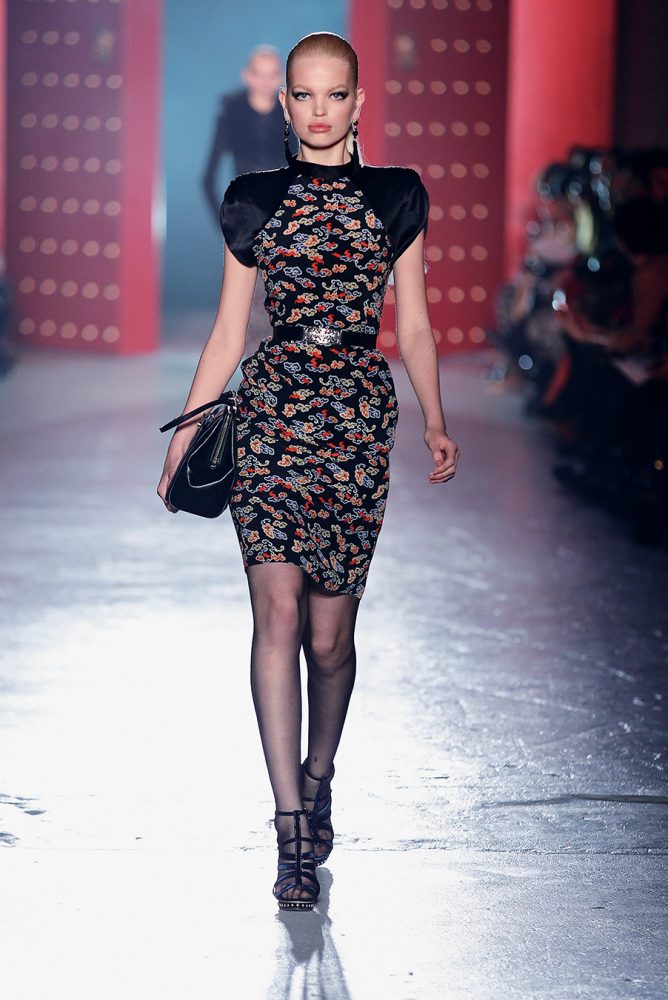Jason Wu arrives at a Gastown restaurant with a small group of Hudson’s Bay Company executives and clientele. They’ve just come from a party thrown in his honour, to celebrate the launch of his spring/summer 2012 ready-to-wear collection. As frothy pink Clover Club cocktails clink together all-too-appropriately for his aesthetic, Wu, smiling and sinking quietly into his seat, is finally able to relax.
He arrived in Vancouver that very morning and will leave again for New York first thing the next day; it’s Wu’s first time back to his hometown in over 15 years. At nine years old, in 1991, he emigrated from Taiwan to Vancouver with his family, like so many others who belonged to that wave from Asia and who have seamlessly woven their culture into the fabric of our city, enriching it. Though he only spent five years here before leaving for boarding school in the United States, they were five auspicious years. Reflecting over dinner, Wu says, “When I moved here, a lot of immigrants from Taiwan and Hong Kong were moving here as well. It was an interesting time. I didn’t speak a word of English, but I had this tutor named Muriel—Muriel Kauffman. I wasn’t so interested in text books, so she gave me a pile of fashion magazines and sort of taught me English through there.”
At the time, perhaps Ms. Kauffman didn’t realize she was grooming the young man to become one of the most successful young fashion designers of this decade. Already, at only 29 years old, Wu has established his own eponymous private fashion label (founded in 2006); been a finalist in the Council of Fashion Designers in America (CFDA)/Vogue Fashion Fund in 2008; and dressed countless celebrities and starlets for public appearances over the years, including most notably First Lady Michelle Obama, whose white floor-length, crystal-embroidered, silk-chiffon gown, worn to the Inaugural Ball, was inducted into the Smithsonian’s National Museum of American History in 2010. Later that year, Wu also received the prestigious CFDA Swarovski Award for Womenswear.
“I liked the pretty pictures,” Wu says earnestly of those first magazines, whose pages today his clothing graces. “I just wanted to read more about what I was seeing.” And shortly after the presentation of his fall/winter 2012 show this past February, Wu was excited to report that Ms. Kauffman was able to join him in New York to observe the catwalk. “It really meant so much to have had her in from Vancouver,” Wu enthuses.
And in more ways than one was the fall/winter 2012 fashion show a personal one. While in Taiwan on the occasion of his brother’s wedding about a year and a half ago, Wu was inspired to create a collection that tapped into his own cultural heritage. “I think that was when the seed was planted that I wanted to do something that was Chinese influenced.” Marching down the runway to the sound of clashing cymbals, models wore the style of three historical periods in Chinese dress: empirical brocades from the Qing Dynasty; structural, military tailoring reminiscent of Mao’s Communist Revolution; and the sensational Hollywood glamorisation of China in 1930s films like Shanghai Express.
“I think I’ve grown up in fashion. Whereas some people would have dipped their toes into it, I dove in headfirst.”
This, of course, was not the first time these themes have appeared in designer fashion—especially as of late. Numerous major fashion houses have appropriated orientalism and chinoiserie in their collections to capture the increasingly powerful Asian consumer group, albeit to criticism at times. But for Wu, “it was more a reflection on how I perceive my own background. I think it was important that I look at it with a different set of eyes, because I grew up with these elements. I almost wanted to poke fun at it a little bit by interpreting it through stereotypes … but also by incorporating all of that in a way that is elegant and powerful at the same time.”
When an article appeared in a September 2009 edition of the Wall Street Journal with the headline, “Asian-Americans Climb Fashion Industry Ladder”, it caused much hype, speculation, and comparison between young New York designers like Wu, Alexander Wang, Phillip Lim, Thakoon Panichgul, Prabal Gurung, Derek Lam, Richard Chai, and Doo-Ri Chung—most of whom have also been recipients of CFDA awards. “I think there is something really exciting going on with youth right now,” Wu retorts. “And [New York] is one of the most exciting places for young designers. This movement’s been going on for a little bit, but people still ask me, ‘There are so many Asian-born designers right now in New York. Why do you think that is?’ Well, I felt like [the fall/winter 2012 collection] was the first time I actually addressed that. And I suppose this hasn’t really been done before—an Asian designer tapping into the Asian side. Usually, culturally, we stay away from it … I feel like I’m at a place where I’m maturing not just as a designer, but as a person, to embark on inspirations that hit close to home.”
And home, as brief as it was for Wu here in Vancouver, is where it all comes full circle. “I just thought Vancouver was one of the places where I really developed and blossomed into my designer abilities,” he says. “It’s the place where it all began. It’s funny, because I remember coming to the Bay. Mind you, it was quite different 15 years ago. It’s got a luxe new spin, now. But it was in Vancouver that my mom bought me my first sewing machine, and that was really when I first started sewing. I didn’t have money for fabric, I just had all these little snippets. So, I made clothes for dolls, instead.”
The dolls were truly what paved the way to Wu’s future successes. At age 16, he submitted his work to Integrity Toys, a major doll manufacturer, and soon began designing costumes and accessories for their collections, something he does on occasion for the company to this day. Taking on increasing responsibility at Integrity as he completed high school, a student exchange to Paris, studies at Parsons the New School for Design in New York, and an internship at Narciso Rodriguez, Wu was all the while building a small empire for himself that would allow him to launch his own fashion label by the mere age of 24. Wu says, “I think I’ve grown up in fashion. Whereas some people would have dipped their toes into it, I dove in headfirst. And I don’t think I would have done it any other way … It wasn’t an option for me not to succeed, because at the time I didn’t know there was any other option. I just saw my goal and I went for it. I knew it. Nothing stopped me.”
And industry leaders took note. Inclusion in photographer Bruce Weber’s July 2008 W magazine editorial, “Summer Camp”, placed Wu alongside designers Kate and Laura Mulleavy of Rodarte, Alexander Wang, Jeremy Laing, Alexis Mabille, Georgina Chapman of Marchesa, and Gareth Pugh as ones to watch. “It was a hot moment,” Wu reminisces. “None of us were really that well-known back then, and now a lot us are doing really interesting things in the industry.” And of course there was also the fortuitous moment in January 2009 when Michelle Obama wore his dress. “I never dreamed of the day where my work, so early on, would be in the Smithsonian and outlive me and be preserved alongside the greats,” Wu says. “It was history in the making. But those aren’t any of the things that crossed my mind as I was making the dress. You can’t think of it, otherwise it becomes too big of a task. I was just trying to design a dress that she would look great in. That was it.”
Even with all the awards and accolades, Wu’s passion and dedication to create beautiful lines and soft details has never waned. He’d still rather be behind the scenes in the workroom, sewing or draping garments, than be at a dinner party (though he is effortlessly charming even when he has to be at one). He also seems immune from the fashion industry’s many distractions when he says, “Fashion is very glamorous, and that’s why I love it. But the glamour is in creating beautiful things. Behind every part of the business, though, it’s mostly hard work, and I think I’m realistic about what I have to do. Don’t get me wrong, I’m incredibly happy and grateful with all the success that has come my way, but I never want to let that stop me from trying to be even better. I mean, I’m 29, and I’m all done? Forget that! I want to do this for another 50 to 60 years.” Surely he will.













